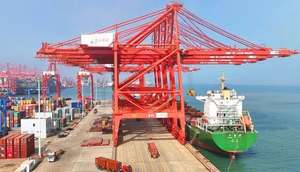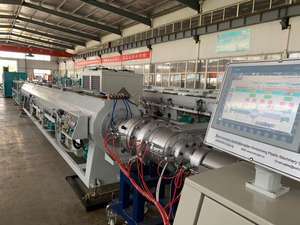
China's Export Policies and Market Dynamics: A Guide for International Businesses
China's export market is a vital engine for global trade, offering a wealth of opportunities for international businesses. This article delves into the current export policies, market dynamics, and strategic innovations by Chinese enterprises to provide a comprehensive guide for foreign entities looking to engage with the Chinese market.
Resilience in the Face of Global Challenges
The Canton Fair, a barometer of China's export performance, has shown that despite global challenges such as geopolitical tensions and trade barriers, Chinese enterprises are doubling down on innovation and quality to secure their place in the global market.
Innovation as a Competitive Edge
Qiangnao Technology, a company specializing in brain-computer interface technology, has made waves with its affordable bionic hand, a testament to China's commitment to innovation. This technology, which interprets muscle and nerve signals to control prosthetics, is priced significantly lower than international counterparts, making it an attractive proposition for global distributors.
Gree Electric, another innovator, is focusing on energy-efficient air conditioning units to meet the evolving demands of international markets, particularly in Brazil, where there is a growing emphasis on sustainability.
Addressing Market Uncertainties
Uncertainties in the global market have led to increased competition among exporters. Chinese enterprises are turning to market diversification and product innovation to mitigate risks. The "Belt and Road" initiative is a key strategy for many, as they seek to expand into emerging markets and reduce reliance on saturated markets.
Despite these uncertainties, China's white goods export growth has been robust, with a year-on-year increase of 18.8% in the first two months of 2024, indicating a strong start to the year.
Policy Easing and Market Response
The recent easing of urea inspection regulations in China has led to a significant market response, with futures prices rising nearly 5%. This policy change is expected to provide a short-term boost to the urea market, although long-term trends will be influenced by international market dynamics and domestic demand.
Expanding Trade in Agricultural Products
Malaysian Durian Exports to China are expected to grow, with the potential for exports to China to reach 20% of total production. The Chinese market's demand for durians far outstrips supply, and with the implementation of the RCEP, trade in agricultural products like durians is set to become more efficient and expansive.
Support Measures for Hainan's Trade Development
Haikou Customs has introduced 21 measures to support the high-quality development of foreign trade in Hainan. These measures are aimed at enhancing the business environment and promoting growth in the province's foreign trade sector. Initiatives include supporting the development of cross-border e-commerce, facilitating the import of scientific research instruments under the "zero-tariff" policy, and strengthening the protection of intellectual property rights for local enterprises.
For international businesses, understanding these policy shifts and market trends is crucial for strategic planning and engagement with the Chinese export market. By staying informed and adaptable, foreign entities can capitalize on the opportunities presented by China's dynamic and innovative export landscape.
Note: This article is based on recent developments and data available as of April 18, 2024. For the most current and detailed information, it is recommended to consult with industry experts and official sources.













